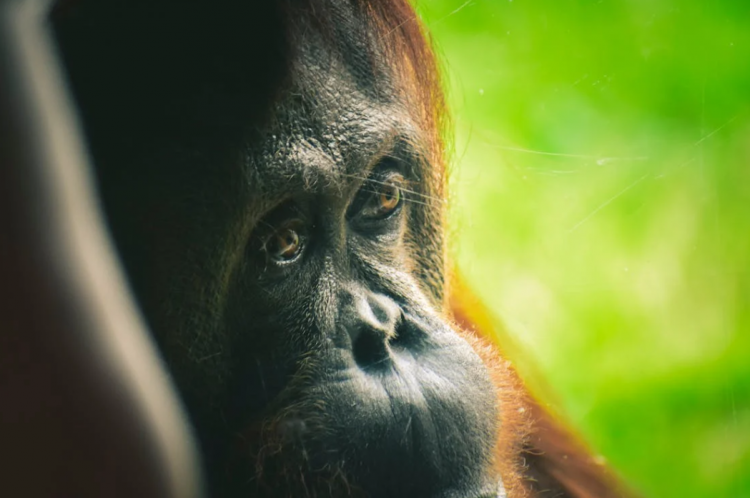A Sumatran orangutan named Rakus has displayed a potentially unprecedented level of medical self-awareness by using a medicinal plant to heal a facial wound, marking what could be the first observed case of such behavior in wild animals. This event, documented by researchers at the Suaq Balimbing research site within Indonesia's Gunung Leuser National Park, highlights the cognitive abilities that humans share with their primate cousins.
The observations, detailed in the Scientific Reports journal, describe how Rakus, after sustaining a significant facial injury believed to have been caused during a conflict with other males, intuitively turned to a local plant known for its healing properties. "Three days following the injury, Rakus selected and chewed leaves from a liana known as Fibraurea tinctoria, commonly referred to as Akar Kuning, and applied the resulting paste to his wound," said Caroline Schuppli, a researcher involved in the study.
This liana plant spans across various parts of Southeast Asia and is traditionally used to treat diseases such as dysentery, diabetes, and malaria. The choice of this particular plant by Rakus suggests a deliberate action aimed at self-healing, leveraging its known anti-inflammatory and antibacterial properties.
The deliberate application of the plant matter to his wound was a clear indication of self-medication, researchers noted. "Rakus's actions appear to be a thoughtful application of medicinal knowledge, suggesting an understanding of natural remedies that rivals human practices," biologist Isabella Laumer explained in her interview with BBC. "This again points towards the similarities we share with them. We are more similar than we are different," she added.
Over the following month, researchers monitored Rakus's recovery, noting a complete healing of the wound, a testament to the efficacy of his self-administered treatment. This behavior underscores not only the intelligence of orangutans but also their capacity for problem-solving in ways that are remarkably similar to human behavior.
The implications of these findings extend beyond mere curiosity and into the realms of both evolutionary biology and conservation. "Understanding that orangutans can utilize their natural environment for health purposes underscores the critical importance of preserving their habitats," Laumer stated.
The Scientific Reports journal emphasizes that while the behavior documented is novel, it is not entirely out of character for such a highly intelligent species. "Up to date, in 21 years and 28,000 observation hours, we never observed any other orangutans at Suaq using Fibraurea tinctoria to treat their wounds," the study notes, suggesting that while the behavior may be rare, it is significant.
The research conducted at the Suaq Balimbing site, which has been ongoing since 1994, provides invaluable insights into the natural behaviors of orangutans, adding a profound layer of understanding to our closest genetic relatives. "The present study may thus present the first report of active wound management with a biologically active substance in a great ape species and provides new insights into the existence of self-medication in our closest relatives and in the evolutionary origins of wound medication more broadly," the scientists concluded.






